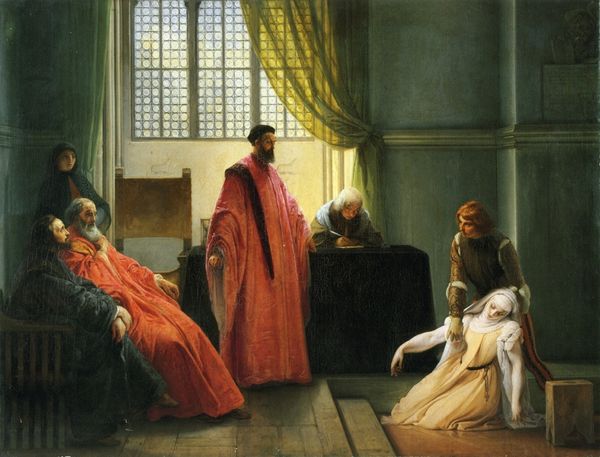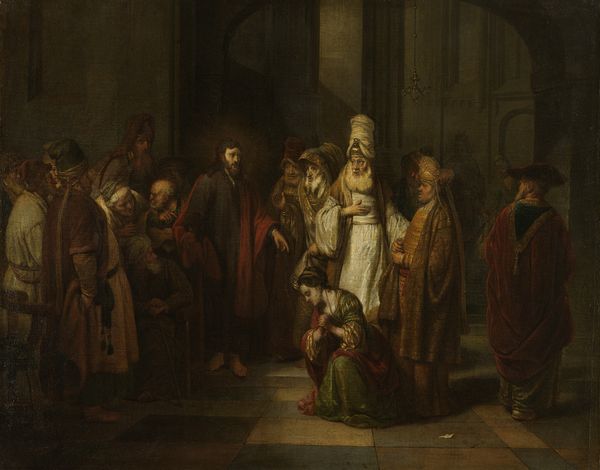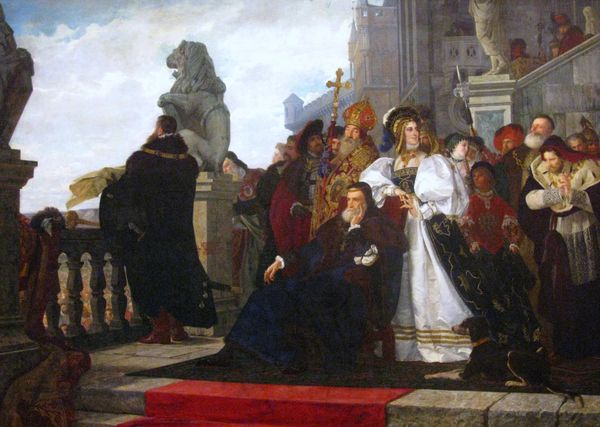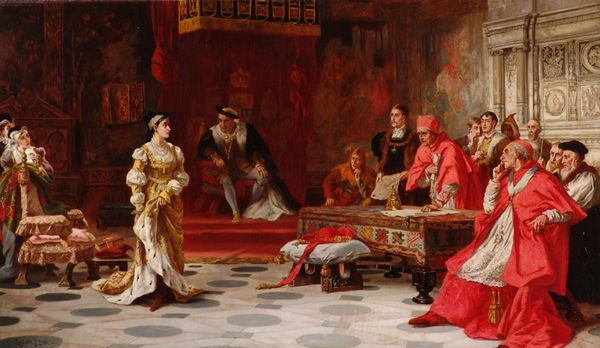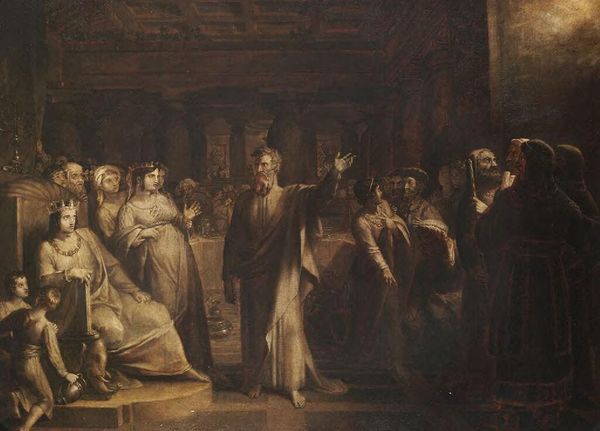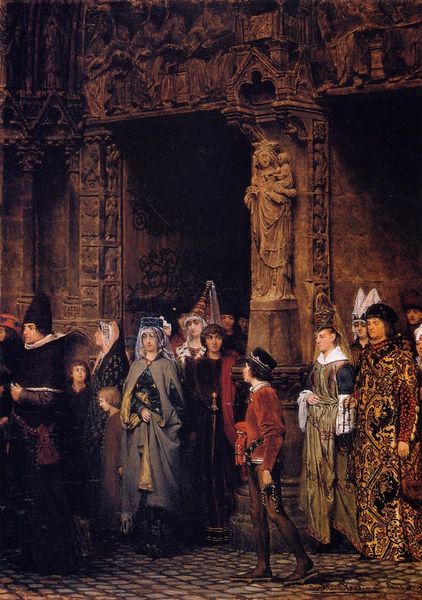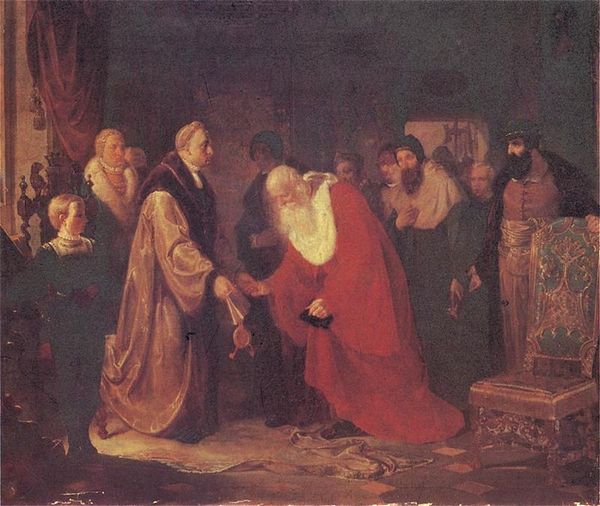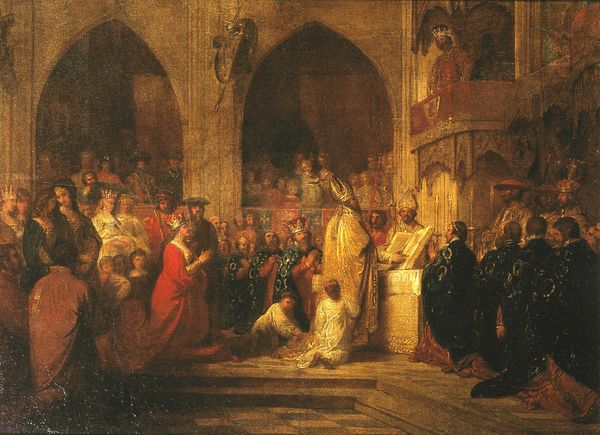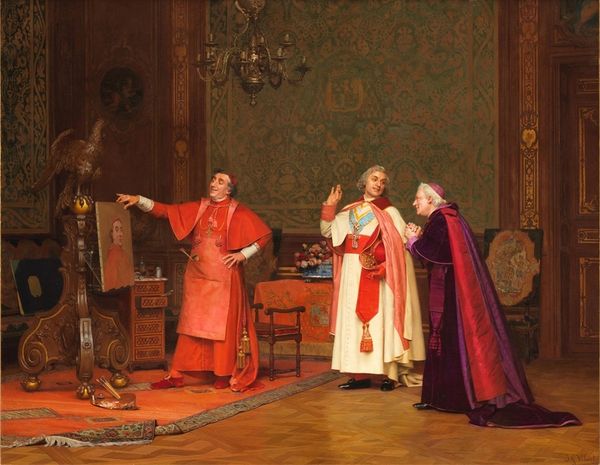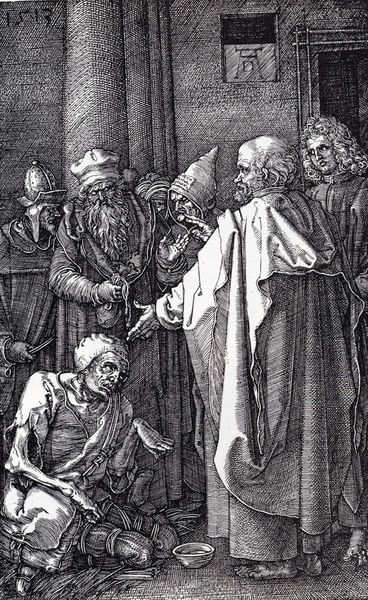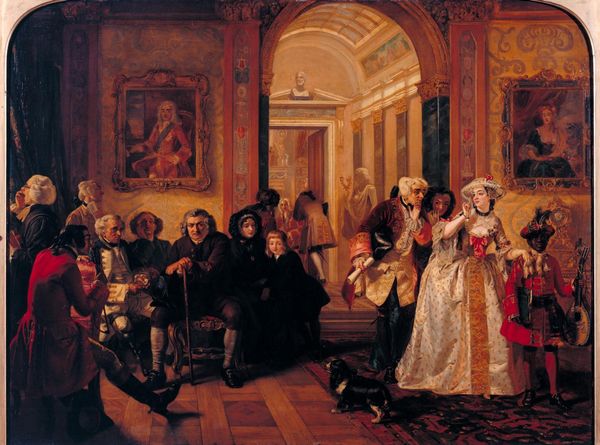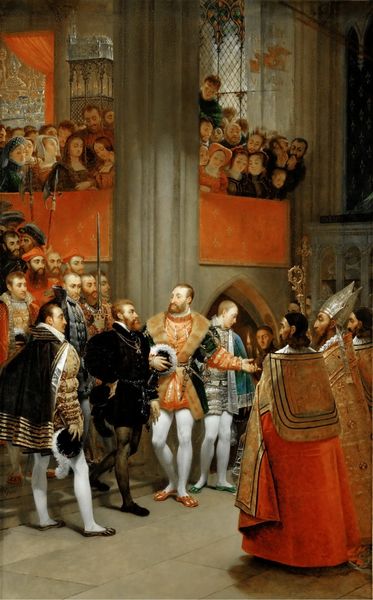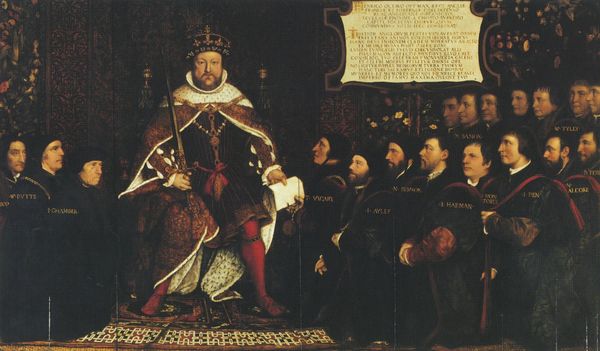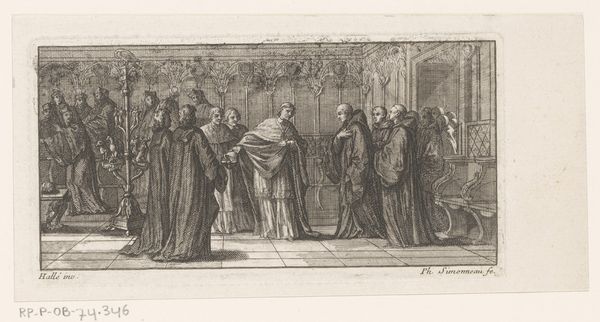
painting, oil-paint
narrative-art
painting
oil-paint
figuration
oil painting
romanticism
history-painting
academic-art
Dimensions: 455 x 308 cm
Copyright: Public domain
Curator: Let's turn our attention to Karl Lessing's epic oil painting, "Johann Hus at the Council of Constance," completed in 1842. It captures a pivotal moment of religious and intellectual conflict in the 15th century. Editor: Wow, that’s... a lot of red! The sheer amount of crimson really strikes me first. And that central figure, bathed in light—he looks completely isolated despite being surrounded. Like he's the only sane person in a room full of velvet cushions and ridiculously tall hats. Curator: The crimson is strategic, highlighting the power and, some would argue, the moral corruption of the council members judging Hus. Consider also how Lessing is aligning Romantic artistic principles with notions of institutional authority and how authority is perceived across cultures. Hus was a Czech theologian and philosopher convicted of heresy, and subsequently burned at the stake. Editor: So, doomed from the start, then? Because that lighting says it all! But even doomed, the way Lessing paints him—there’s a dignity there, a quiet strength. I wonder, what was Lessing trying to say about faith itself here? Is it about steadfastness or foolhardiness? Curator: Precisely. Lessing is engaging with ideas concerning individual conscience versus institutional power. Romanticism, the movement in which Lessing was deeply invested, emphasized the individual and their emotional experience against the constraints of social norms. He highlights a pre-Reformation figure standing firm against the Catholic establishment, offering a sharp critique. Editor: And the body language! Hus seems to be making his point clear to some pretty cranky looking individuals, a scene that could have come straight out of contemporary media. It's interesting, how something painted so long ago can feel like an ongoing struggle. Curator: It does speak to perennial themes: truth versus power, the individual against the collective. And for Lessing and his contemporary audience, painting about such conflicts surely brought to the fore important contemporary political discourses regarding liberty and autonomy in civil society. Editor: It’s powerful and haunting, definitely something to contemplate as you try to imagine the emotional gravity during these sorts of fraught exchanges, still so common today. Curator: Indeed. Lessing masterfully allows us to glimpse this historical flashpoint and, more profoundly, its lasting reverberations across history.
Comments
No comments
Be the first to comment and join the conversation on the ultimate creative platform.
